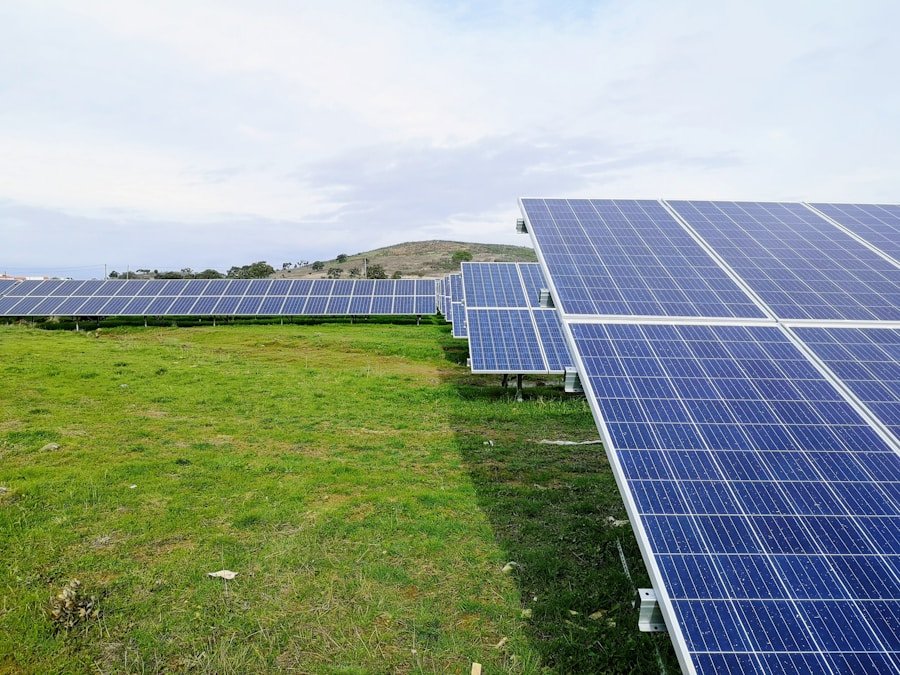Renewable energy is becoming increasingly important in today’s world as we strive to reduce our reliance on fossil fuels and combat climate change. The use of renewable energy sources such as solar, wind, hydroelectric, biomass, and geothermal power is crucial in reducing greenhouse gas emissions and creating a more sustainable future. By harnessing the power of natural resources, we can generate clean energy that is both environmentally friendly and economically viable. The importance of renewable energy cannot be overstated, as it not only helps to mitigate the effects of climate change but also reduces our dependence on finite resources and promotes energy security. As the demand for energy continues to grow, it is essential that we embrace renewable energy technologies to ensure a sustainable and secure energy future for generations to come.
Renewable energy also offers numerous benefits beyond environmental sustainability. It creates jobs, stimulates economic growth, and reduces air and water pollution. By investing in renewable energy, we can create a more resilient and diversified energy system that is less vulnerable to price fluctuations and supply disruptions. Additionally, renewable energy technologies are becoming increasingly cost-effective, making them a viable alternative to traditional fossil fuels. As we continue to develop and deploy renewable energy solutions, we can reduce our carbon footprint and create a cleaner, healthier planet for future generations. It is clear that the importance of renewable energy cannot be overstated, and it is essential that we continue to invest in and promote the use of clean, sustainable energy sources.
Solar Power: Harnessing the Sun’s Energy
Solar power is one of the most abundant and widely available sources of renewable energy. By harnessing the sun’s energy through photovoltaic cells or solar thermal systems, we can generate electricity and heat water for residential, commercial, and industrial use. Solar power offers numerous benefits, including reduced electricity bills, lower carbon emissions, and increased energy independence. The technology behind solar power has advanced significantly in recent years, making it more efficient and affordable than ever before. With the cost of solar panels continuing to decrease, more and more people are turning to solar power as a clean and sustainable energy solution.
In addition to its environmental and economic benefits, solar power also offers a high degree of reliability and resilience. Unlike traditional power sources, solar panels can continue to generate electricity even during grid outages or natural disasters. This makes solar power an attractive option for remote or off-grid locations, as well as for critical infrastructure such as hospitals and emergency response facilities. As we continue to harness the sun’s energy through solar power, we can reduce our reliance on fossil fuels and create a more sustainable energy future for all.
Wind Power: Tapping into a Clean and Abundant Resource
Wind power is another important source of renewable energy that has gained popularity in recent years. By harnessing the kinetic energy of the wind through wind turbines, we can generate electricity for homes, businesses, and communities. Wind power offers numerous benefits, including reduced greenhouse gas emissions, lower operating costs, and increased energy security. The technology behind wind power has advanced significantly, with larger and more efficient turbines being developed to capture more wind energy and generate more electricity. As a result, wind power has become increasingly cost-effective and competitive with traditional fossil fuels.
In addition to its environmental and economic benefits, wind power also offers a high degree of scalability and flexibility. Wind farms can be built in a variety of sizes and configurations to meet the specific needs of different regions and communities. This makes wind power an attractive option for both urban and rural areas, as well as for remote or off-grid locations. As we continue to tap into the clean and abundant resource of wind power, we can reduce our carbon footprint and create a more sustainable energy future for generations to come.
Hydroelectric Power: Utilising the Power of Water
Hydroelectric power is one of the oldest and most widely used sources of renewable energy. By harnessing the power of flowing water through dams and turbines, we can generate electricity for homes, businesses, and industries. Hydroelectric power offers numerous benefits, including low operating costs, high reliability, and long-term sustainability. The technology behind hydroelectric power has advanced significantly in recent years, with new designs and innovations making it more efficient and environmentally friendly than ever before. As a result, hydroelectric power has become an important part of the global energy mix, providing clean and reliable electricity to millions of people around the world.
In addition to its environmental and economic benefits, hydroelectric power also offers a high degree of flexibility and storage capacity. Hydroelectric dams can store water in reservoirs during periods of low demand and release it during periods of high demand, providing a reliable source of electricity that can be adjusted to meet changing needs. This makes hydroelectric power an attractive option for balancing the intermittent nature of other renewable energy sources such as solar and wind power. As we continue to utilise the power of water through hydroelectric power, we can reduce our reliance on fossil fuels and create a more sustainable energy future for all.
Biomass Energy: Turning Waste into Power
Biomass energy is a versatile source of renewable energy that is derived from organic materials such as wood, agricultural residues, and municipal solid waste. By converting these materials into biofuels or biogas through processes such as combustion, gasification, or anaerobic digestion, we can generate heat, electricity, and transportation fuels. Biomass energy offers numerous benefits, including waste reduction, carbon sequestration, and rural development. The technology behind biomass energy has advanced significantly in recent years, with new methods and technologies making it more efficient and sustainable than ever before. As a result, biomass energy has become an important part of the global energy mix, providing clean and renewable energy to millions of people around the world.
In addition to its environmental and economic benefits, biomass energy also offers a high degree of versatility and reliability. Biomass resources are widely available and can be used in a variety of applications to meet different energy needs. This makes biomass energy an attractive option for both developed and developing countries, as well as for rural or off-grid communities. As we continue to turn waste into power through biomass energy, we can reduce our carbon footprint and create a more sustainable energy future for generations to come.
Geothermal Energy: Harnessing Earth’s Natural Heat
Geothermal energy is a reliable source of renewable energy that is derived from the heat stored beneath the earth’s surface. By tapping into this natural heat through geothermal power plants or heat pumps, we can generate electricity and heat for residential, commercial, and industrial use. Geothermal energy offers numerous benefits, including low operating costs, high reliability, and minimal environmental impact. The technology behind geothermal energy has advanced significantly in recent years, with new drilling techniques and technologies making it more efficient and cost-effective than ever before. As a result, geothermal energy has become an important part of the global energy mix, providing clean and sustainable energy to millions of people around the world.
In addition to its environmental and economic benefits, geothermal energy also offers a high degree of stability and baseload capacity. Geothermal power plants can operate 24/7 regardless of weather conditions or time of day, providing a reliable source of electricity that can meet constant demand. This makes geothermal energy an attractive option for meeting the base load requirements of the grid while complementing other intermittent renewable energy sources such as solar and wind power. As we continue to harness earth’s natural heat through geothermal energy, we can reduce our reliance on fossil fuels and create a more sustainable energy future for all.
The Future of Renewable Energy: Innovations and Advancements
The future of renewable energy looks promising as new innovations and advancements continue to drive the industry forward. From improved solar panel efficiency to larger wind turbines to advanced bioenergy technologies, there are numerous developments on the horizon that will further enhance the viability and sustainability of renewable energy sources. In addition to technological advancements, policy support and investment in research and development are crucial for accelerating the deployment of renewable energy technologies on a global scale.
One area of innovation that holds great promise for the future of renewable energy is energy storage. As the integration of intermittent renewable energy sources such as solar and wind power continues to grow, there is an increasing need for cost-effective and efficient energy storage solutions that can store excess electricity when it is generated and release it when it is needed. Advances in battery technology, grid-scale storage systems, and demand-side management are all contributing to the development of a more flexible and resilient grid that can accommodate higher levels of renewable energy penetration.
Another area of innovation that is shaping the future of renewable energy is smart grid technology. By integrating advanced communication and control systems into the electricity grid, smart grid technology enables real-time monitoring, analysis, and management of electricity supply and demand. This allows for greater integration of renewable energy sources into the grid while improving overall system efficiency and reliability.
In conclusion, the importance of renewable energy cannot be overstated as we strive to create a more sustainable and secure energy future for all. By harnessing the power of natural resources such as solar, wind, hydroelectric, biomass, and geothermal power, we can reduce our reliance on fossil fuels, mitigate climate change, create jobs, stimulate economic growth, and improve air quality. The future of renewable energy looks promising as new innovations and advancements continue to drive the industry forward. With continued investment in research and development, policy support, and technological advancements such as energy storage and smart grid technology, we can accelerate the deployment of renewable energy technologies on a global scale and create a cleaner, healthier planet for future generations.




0 Comments